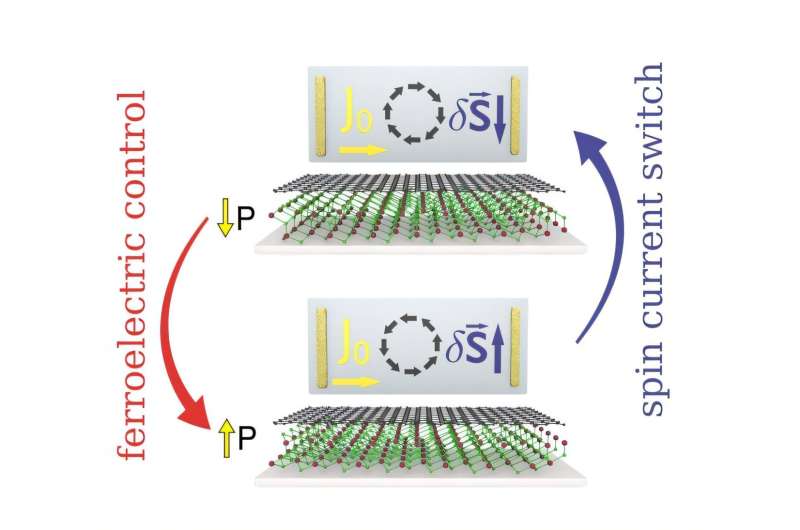
A collaborative research team from the Slovak Academy of Sciences has achieved a significant breakthrough in controlling spin currents in graphene. By integrating graphene with a ferroelectric In2Se3 monolayer, the researchers have demonstrated that electrical switching can effectively reverse the direction of spin currents. This innovation may pave the way for energy-efficient, nonvolatile, and magnet-free spintronic devices.
The findings, published on November 14, 2025, in the journal Materials Futures, highlight a new method for manipulating spin currents, offering a promising alternative to conventional techniques that rely on magnetic fields. This research addresses a critical challenge in the field of spintronics, which seeks to exploit the intrinsic angular momentum of electrons for information processing.
Advancements in Spintronics
Over the past two decades, spintronics has emerged as a leading area of research in nanoelectronics. By leveraging the spin of electrons, this technology promises substantial reductions in power consumption and heat production compared to traditional charge-based electronics. It also offers faster operational speeds and nonvolatile data retention, making it a compelling avenue for future computing systems.
Despite these advantages, one of the main obstacles in spintronics is achieving precise electrical control over spin currents without relying on external magnetic fields. Traditional magnetic manipulation methods present challenges related to scalability and energy efficiency, particularly in compatibility with existing semiconductor technologies.
Innovative Heterostructures
Graphene, known for its remarkable electronic mobility and long spin-relaxation time, has been a focal point in spintronic research. However, its limited intrinsic spin-orbit coupling has hindered direct spin control. To address this, scientists have explored the use of van der Waals heterostructures, which involve stacking graphene with two-dimensional (2D) materials to enhance functionality through proximity effects.
In this latest study, the researchers introduced a novel graphene/In2Se3 heterostructure. They found that the ferroelectric polarization of In2Se3 can modulate the spin-orbit coupling in graphene. Through extensive first-principles calculations and tight-binding modeling, they demonstrated that flipping the polarization of In2Se3 not only reverses the sign of the Rashba-Edelstein effect but also facilitates an electrical “chirality switch” for spin currents in graphene.
At a perfectly aligned interface (0°), the system exhibits a conventional Rashba-Edelstein effect where an applied charge current generates a transverse spin accumulation locked to the ferroelectric polarization. In contrast, at a twisted geometry (17.5°), the system transitions into an unconventional regime dominated by a new phenomenon known as the unconventional Rashba-Edelstein effect. Here, the spin current aligns closely with the charge flow, a capability previously unattainable in planar graphene systems.
These findings lay the groundwork for developing graphene-based spin transistors that can be controlled through ferroelectric switching. This advancement could lead to next-generation spin logic and memory devices characterized by low energy consumption and high operational speeds.
The research team emphasizes the need for further experimental validation of their theoretical results to fully realize the potential of electrically controlled, nonvolatile spintronic devices. The integration of ferroelectric materials with graphene represents a promising direction for harnessing new functionalities in spintronics.
For more information, refer to the study by Marko Milivojevic et al., titled “Ferroelectric switching control of spin current in graphene proximitized by In2Se3,” published in Materials Futures.







